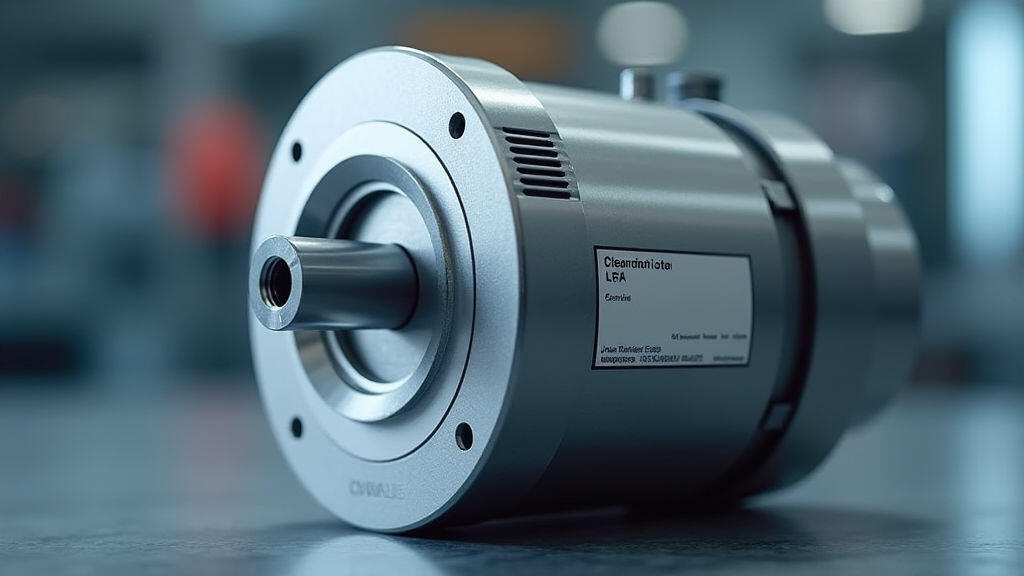
The medical equipment industry is undergoing a period of rapid innovation, driven by advancements in diagnostics, treatment methodologies, and patient care. A critical, often overlooked, component underpinning this innovation is the gear motor. These compact, efficient power transmission devices are essential for a vast array of medical applications, from precision surgical tools and infusion pumps to sophisticated imaging systems and laboratory automation equipment. Choosing the right gear motor isn't simply about selecting a product; it's about optimizing performance, ensuring reliability, and meeting stringent safety standards – especially as we navigate a future increasingly reliant on connected medical devices and AI-powered diagnostics. This article provides an in-depth analysis of gear motor selection principles and a performance comparison, focusing on the unique demands of the medical field and highlighting the advantages of solutions offered by MES-Drive.
Gear motors combine the advantages of electric motors and gearboxes to deliver precisely controlled torque and speed. In medical equipment, this translates to crucial functionalities like:
Selecting the optimal gear motor for a specific medical application requires a thorough understanding of several key parameters. Here's a breakdown of the critical calculation principles:
1. Load Requirements: The first and most important factor is the load the motor needs to drive. This includes:
2. Gearbox Ratio: The gear ratio determines the relationship between input and output torque and speed. Choosing the appropriate ratio is crucial for achieving the desired performance.
3. Motor Characteristics: The motor chosen must be compatible with the load requirements and the gearbox ratio. Key considerations include:
4. Environmental Factors: Medical environments pose unique challenges:
Different gear motor types offer varying performance characteristics. Here’s a brief comparison:
| Gear Motor Type | Advantages | Disadvantages | Typical Applications | |---|---|---|---| | Worm Gear Motor | High gear ratio, self-locking capabilities, compact design. | Lower efficiency compared to other types, higher heat generation. | Infusion pumps, medical calipers, positioning systems. | | Planetary Gear Motor | High torque density, compact size, high efficiency. | More complex design, higher cost. | Surgical robots, imaging systems, laboratory equipment. | | Spur Gear Motor | High speed, simple design, low cost. | Limited torque capability, high noise levels. | Basic positioning systems, laboratory automation. | | Helical Gear Motor | High efficiency, lower noise levels than spur gears, good torque capacity. | More expensive than spur gears. | Medical imaging systems, precision positioning. |

MES-Drive is a leading manufacturer of high-performance gear motors specifically designed for the medical equipment industry. MES-Drive understands the critical requirements of medical applications and offers a comprehensive range of gear motors that meet stringent quality standards. The company emphasizes:
The medical equipment industry is increasingly embracing advanced technologies like AI, robotics, and telehealth. This shift is creating new demands on gear motors. For example, AI-powered surgical robots require highly precise and responsive motion control, driving the need for advanced planetary gear motors. The rise of minimally invasive surgery also necessitates smaller, more efficient gear motors. Furthermore, remote patient monitoring devices are placing greater emphasis on energy efficiency to extend battery life.
The convergence of these trends presents a significant opportunity for MES-Drive. By continuing to innovate and develop gear motors that meet these evolving demands, the company can play a pivotal role in shaping the future of medical technology.

Selecting the right gear motor for medical equipment is a complex process requiring a deep understanding of application demands, performance characteristics, and regulatory requirements. Factors such as precision, reliability, sterilization compatibility, and environmental resistance are paramount. MES-Drive offers a portfolio of high-performance gear motors specifically tailored to meet these challenges, providing medical equipment manufacturers with a robust and reliable power transmission solution. With the ongoing advancements in medical technology, particularly in areas like AI-assisted surgery and remote healthcare, the demand for sophisticated and dependable gear motors will only continue to grow. As the industry continues to embrace innovation, MES-Drive is well-positioned to provide the cutting-edge gear motor solutions needed to power the next generation of medical devices and improve patient outcomes.
Leave A Reply
Your email address will not be published. Required fiels are marked